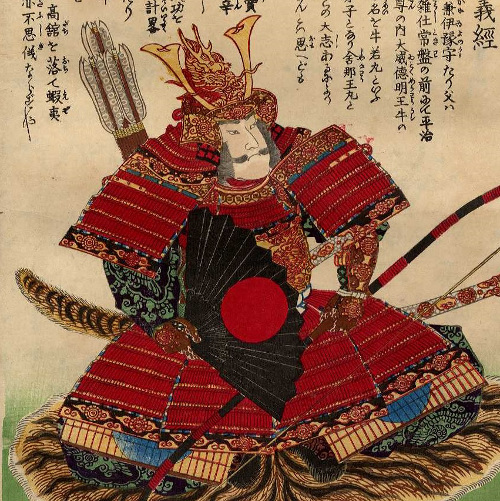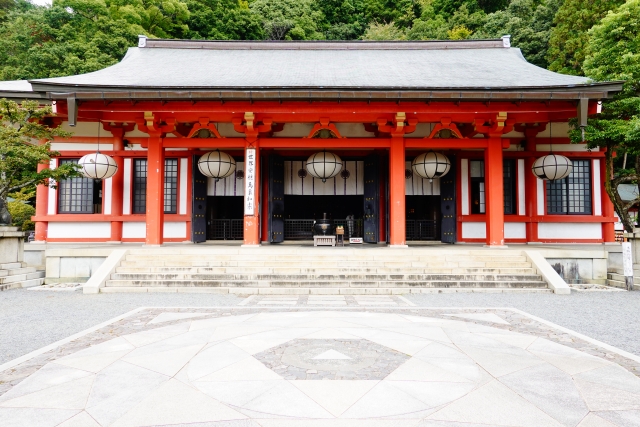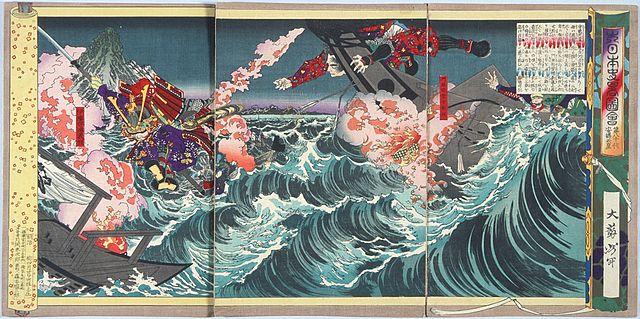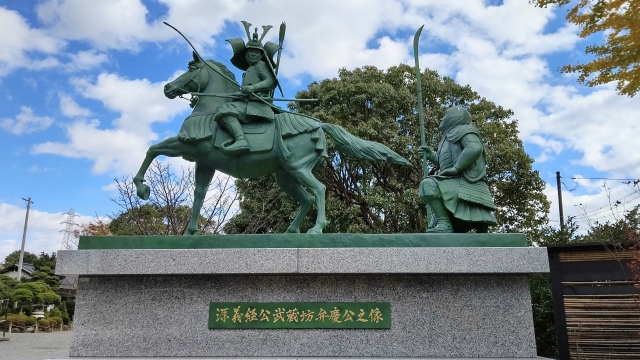Japan’s long history was shaped by the warrior class and there are many samurai whose fame has reached outside of Japan as well. One of these, Minamoto no Yoshitsune (1159–1189), is still revered as one of Japan’s greatest warriors, and numerous true stories as well as legends are centered around him, most certainly the reason for his enduring popularity.

Yoshitsune – whose childhood name was Ushiwakamaru – was born around 1159, in the late Heian period. His father Yoshitomo was the head of the Minamoto clan, a powerful noble family deeply rooted at court. When his father was killed in a rebellion in 1160, Yoshitsune had to flee Kyoto with his mother. Turning 10 years old, he was placed in the care of the monks at Kuramadera in the northern part of Kyoto. According to a popular legend, he there received training from Sōjōbō, the king of the tengu who lived in the mountains surrounding the temple.

Be that as it may, fact is, that Yoshitsune was an accomplished swordsman from a young age, so much so that he defeated the famous (and much older) warrior monk Benkei in a duel at Gojo Bridge. Benkei promptly became Yoshitsune’s retainer and would fight side-by-side with him until the very end.
From 1180 to 1185, both fought for Yoshitsune’s brother Yoritomo in the Genpei war against the Taira clan. This war was immortalized in the Heike Monogatari, where Yoshitsune’s exploits take up most of the 3rd part of the story. He was a successful general and eventually led the Minamoto to victory at the final battle at Dan-no-ura in 1185.

Sadly, his success did him no good. His brother Yoritomo, established as head of the Minamoto clan, was jealous of the younger Yoshitsune’s popularity and feared that he might be deposed by him in the long run. He conspired against Yoshitsune, who was finally betrayed in 1189 and forced to commit suicide, with Benkei defending him to the last and dying with him. Today, Yoshitsune is enshrined at Shirahata Jinja in Fujisawa.

As mentioned above, many legends surround Yoshitsune and he was very popular among the people. For example, it is said that he escaped his forced suicide and made his way up to Hokkaido, or even farther to the Asian continent, where he re-emerged as none other than Genghis Khan. Many of the stories from the Heike Monogatari were turned into Noh plays and have inspired visual artists for centuries.
